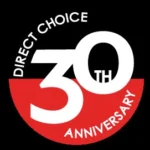On April 8th, this writer will be taking part in a momentous astronomical event that’s proving to be an equally massive marketing event. According to Forbes, the Total Solar Eclipse could generate $1 billion boost in consumer spending on hotels, flights and rental cars to food, gas, special events and souvenirs.
Along a 115-mile-wide path stretching from Maine to Texas, cities and travel companies are luring millions of potential visitors with special packages and watch parties. Major brands are cashing in on the rare event, too. Sun chips, for example, is promoting a chance to win a limited-edition eclipse-themed flavor (pineapple habanero and black bean spicy gouda) and solar eclipse swag bag only during the eclipse.
What’s so hot about event-driven marketing?
First and foremost, the majority of consumers love a good party. Business insider recently reported that American consumers have mostly moved on from the pandemic and are spending more on experiences than ever before. Experiences create memories, and helping customers create a memory is the most powerful and permanent way you can enter their minds. For example, the simple act of entering to win Solar Eclipse Sun Chips may forever be recalled when I look back at my photos of the sun disappearing from the sky in 2024.
What’s the difference between event and experiential marketing?
While event marketing is about advertising your product or service as part of a larger event, experiential marketing is more about engaging with your audience directly with a hands-on experience. The two often work together. Take the above Sun Chips campaign as an example. If they simply released their Solar Eclipse flavor in stores, that would be pure event marketing. Instead, Frito-Lay took their campaign one step further by creating an interactive online experience that lasts for only 4 minutes during the totality of the eclipse.
Experiential marketing is often its own event, like a pop-up store that offers something extraordinary. Funko’s collaboration with Snoop Dogg called Tha Dogg House is a prime example, featuring photo-friendly murals, larger-than-life Funko Pops!, and exclusive collectibles. Taco Bell took the pop-up store to the extreme with their very own pop-up hotel in 2019. “The Bell,” which was created in collaboration with the V Hotel in Palm Springs, sold out in just two minutes but the memories will last forever.
What if I don’t have the resources for a pop-up hotel?
You don’t need a pop-up store or celestial event to make an impact. Simply choose a relevant and timely event, whether it’s a trade show or a music festival, and proper tactics to connect with your audience. Brainstorm how to build excitement and interest in new and creatively themed ways. Develop a campaign of pre-event emails and social posts to build conversations around your event/experience and generate traffic. Any way you can connect on a personal and emotional level will make your brand experience a memorable one.


